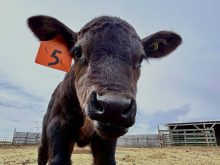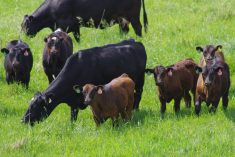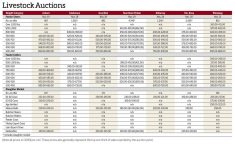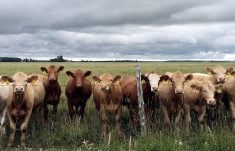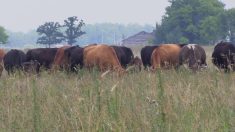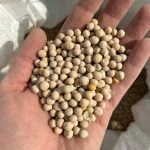Heifers give beef producers an interesting conundrum this year.
With the market flying high, they could always plan to sell those cattle at a premium. If the market stays high though, it might be a good time to finally expand the herd, and the farmer might see value in retaining females to that end, particularly if they’ve got their herd genetics keyed in.
WHY IT MATTERS: Beef farmers are trying to tease out the right marketing plan, faced with the tug of war between high prices and tariff-driven trade volatility.
Read Also
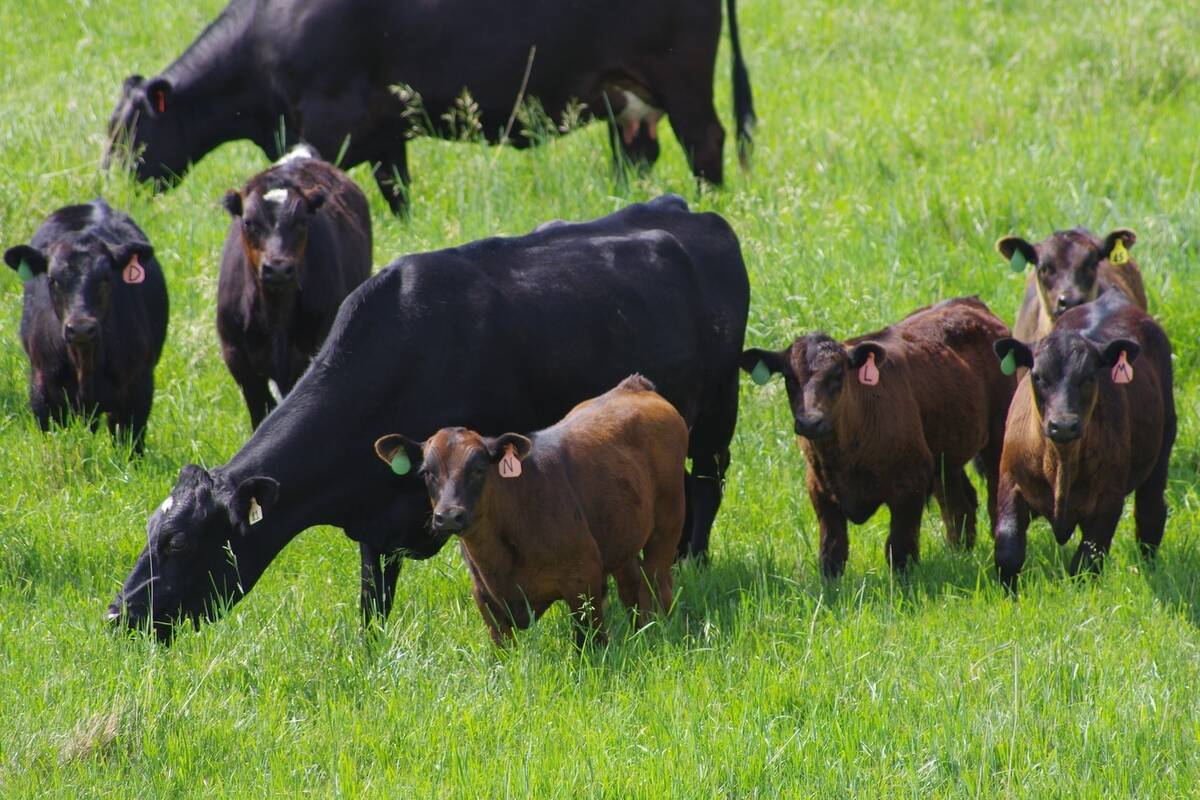
Grazing ‘sweet spot’ boosts pasture performance
Timing-focused approach to pasture management touted to boost forage growth, livestock gains while also cutting farmer labour and inputs
There are few answers that will be right for every farm, but the Canadian Cow-Calf Cost of Production (COP) Network is offering producers some baseline numbers — and some objective facts based on that data — to help sort through the murk.
The network’s Cost of Raising Replacement Heifers document runs numbers on costs, payback periods and whole-herd perspectives, based on information gathered during the 2023 producer survey (the latest from which data is available).
The COP Network took four main points away from the survey: Raising replacement heifers is a significant investment with long-term implications for profitability.
The forgone revenue from not selling calves is a substantial opportunity cost of retaining heifers for replacement.
The payback period of replacement heifers varies widely depending on cost structure, market condition and cow longevity.
Effective cost control and efficient management are essential for optimizing replacement strategies and maximizing profitability.
“As replacement heifers represent a major cost for cow-calf producers, choosing a herd replacement strategy has important implications on cow-calf profitability,” Brenna Grant, executive director of CanFax, said via email.
CanFax is among several industry partners in the COP Network. The Beef Cattle Resource Council (BCRC) funds the initiative.
Making a beef herd replacement plan
Beef growers should be aware of factors both within and outside their control to develop their own cost structures, said Grant.
Producers have been hit hard by drought in recent years. Operations culled hard as feed supplied dried up and many ranchers saw more beef genetics than they would have preferred head to the auction mart.
“Producers who are aware of their own cost structure can make informed decisions on what is best for their operation this year — recognizing it might be different than last year,” she said.
Heifer cost of production higher than normal
The 2023 survey analyzed the costs of raising replacement heifers from weaning until pregnancy check in the fall of the following year, covering approximately 12 months, including one winter feeding and a summer grazing period.
The data was derived from 63 benchmark farms participating in the network. The survey measured opportunity, feed, input, land and labour costs, plus factors like insurance, taxes and conception rates.
Based on that data, the network estimated the cost of raising replacement heifers in 2023 at an average of $2,904 per heifer, with figures ranging from $1,905 to $3,806. That was a large jump from 2022, when the cost was $2,319 on average.
Some metrics took a bigger bite out of the cost of production than others. “Notably, the forgone revenue from not selling the calf at weaning accounts for 60 per cent of the total costs, with other major expenses tied to labour and essential inputs linked to feed production and land,” the report read.
Buying replacements
When purchasing replacement heifers, producers should consider the economic value of replacements entering the herd, wrote Grant.
“The value of a bred heifer can be indicated by its net present value (NPV), which is the sum of future cash flows in present value dollars.
“It is affected not only by cash costs like annual maintenance and economic factors like salvage value and calf prices, but also by productivity factors such as reproductive life span and weaning weight.”
There are tools available for producers to determine the NPV of an animal. The Beef Cattle Research Council’s replacement heifer calculator is one example.
Whole-herd perspectives
Producers need to know their total replacement costs, which depend on both the cost of raising each replacement heifer and the overall replacement rate.
For the network’s benchmark farms, replacement cost accounted for an average eight per cent of total herd costs in 2023. By distributing the cost of all replacement heifers across the entire cow herd, the surveyors estimated the average replacement cost per cow at $139, with a range from $50 to $272.
“Farms with higher replacement rates can still lower costs through efficient management,” said the report. “Effective cost control is crucial to optimizing herd replacement strategies.”
Payoff period comes down to efficiency
How long it takes to pay off a replacement heifer is always a serious consideration. According to the report, the payback period to recoup initial investment on a replacement heifer varies greatly and, again, depends on efficiency.
The break-even threshold for the benchmark farms was found by splitting data into three heifer cost groups — low, medium and high — based on the total cost of raising a replacement heifer. There were 21 benchmark farms in each category.
The low group’s costs averaged $2,382 per heifer, the medium group paid $2,907 per heifer and the high group saw costs of $3,422.
All three, the report noted, were notably higher than the 2019 to 2023 five-year averages, which would have been $866 for the low group, $1,028 for the medium group and $1,358 for the high group.
Assuming calf prices increase 25 per cent from the 2015 to 2023 average over the next 10 years, low-cost farms would require five consecutive productive years to recoup their initial investment for heifers retained in 2023, the report noted. Medium-cost farms would take seven years under the same criteria.
“However, high-cost farms are unlikely to recover their initial investment within the heifer’s productive lifespan,” said the report.
Grant said that the numbers show “how replacement heifers impact whole-farm profitability and economic viability of the operation.
“Paying too much during high prices live(s) on the farm’s annual cost of production for years to come. Having a sharp pencil can be the difference between profits and not down the road.”
Grant further noted that the low-cost group had lower replacement rates, “meaning they needed less head to keep the herd steady. They also had lower development costs. This combination helped them keep overall costs down.”
Think about tradeoffs
Although many producers raise replacement heifers on-farm, Grant noted that buying replacement heifers could ultimately cost less, depending on the production cost of the operation and current market situation.
Both growing and buying replacement heifers come with their own pros and cons.
“Producers currently face tradeoffs between rebuilding slower with (their) own genetics, matching forage supply with animal numbers, compared with purchasing heifers, which rebuilds faster, supporting economies of scale and profitability, but also represents risks of genetics not suiting environment or management style,” she said.
Heifer price another consideration
While the survey looked closely at the cost of raising replacement heifers, the market price of the animals during the time of the survey wasn’t part of the analysis.
A recent Manitoba Co-operator story found Western Canadian auctioneers selling replacement heifers for more than $3,000 per head — approximately double the prices they’ve gone for in recent years.
Auctioneer Tyler Slawinski said 800 to 900 pound replacement heifers were going for $3,200 to $3,600 a head at the Gladstone Auction Market in western Manitoba earlier this spring.
Although these high prices may be discouraging to producers still rebuilding their herds after years of drought, many beef growers are approaching high replacement heifer prices strategically, said Bryan Danard of Calgary Stockyards.
“What we’re seeing now is that feeder cattle are so high, a lot of guys that normally turn out yearlings on grass, rather than just turning out straight yearlings, (they) are buying replacement heifers to breed and sell into the bred market this fall, just because it worked so well last year,” he said.
Cost of Raising Replacement Heifers can be found on the CanFax website at canfax.ca.




